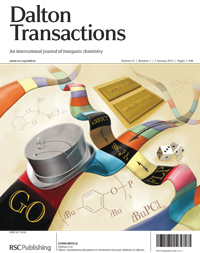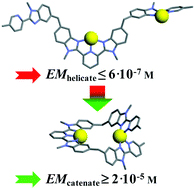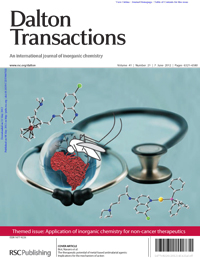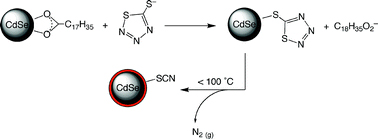
Dalton Transactions publishes articles from around the globe
Dalton Transactions has been publishing research in inorganic chemistry for over 40 years, from over 85 countries. To highlight some of the contributions from across the globe we will be selecting a different geographic region each month, collecting some high impact papers and making them free to access! This month, the USA……
Rapid catalytic water oxidation by a single site, Ru carbene catalyst
Zuofeng Chen, Javier J. Concepcion and Thomas J. Meyer
Dalton Trans., 2011,40, 3789-3792
Hydro-ionothermal syntheses, crystal structures, and properties of five new divalent metal iminophosphonates
Kevin J. Gagnon, Andrey V. Prosvirin, Kim R. Dunbar, Simon J. Teat and Abraham Clearfield
Dalton Trans., 2012,41, 3995-4006
Non-traditional platinum compounds for improved accumulation, oral bioavailability, and tumor targeting
Katherine S. Lovejoy and Stephen J. Lippard
Dalton Trans., 2009, 10651-10659
l
Synthesis and reactivity of cationic niobium and tantalum methyl complexes supported by imido and β-diketiminato ligands
Neil C. Tomson, John Arnold and Robert G. Bergman
Dalton Trans., 2011,40, 7718-7729
Isocyanide insertion and cyclization reactions to form indolines using pincer-type complexes of scandium
Benjamin F. Wicker, Maren Pink and Daniel J. Mindiola
Dalton Trans., 2011,40, 9020-9025
O2 Reduction to H2O by the multicopper oxidases
Edward I. Solomon, Anthony J. Augustine and Jungjoo Yoon
Dalton Trans., 2008, 3921-3932
You can check out our homepage for the latest articles and if you follow us on twitter or sign up to our e-alert service you can keep up to date with the latest news in inorganic chemistry, hassle free.
Interested in finding out more about the RSC? Join the RSC University Roadshow 2012, which is currently touring the USA, giving you the opportunity to meet some of the RSC Editors, Associate Editors, Board members and get demonstrations on our interactive services such as ChemSpider!
 The 2011 Journal Citation Reports ® (Thomson Reuters, 2012) have been released and the Dalton Transactions impact factor* has increased to 3.84!
The 2011 Journal Citation Reports ® (Thomson Reuters, 2012) have been released and the Dalton Transactions impact factor* has increased to 3.84!














![A Sr2+ salt of [MoVI72MoV60O372(CH3COO)30(H2O)72]42− exhibits a superposed kagome-lattice with huge channels whose diameters measure approximately 3.0 nm A Sr2+ salt of [MoVI72MoV60O372(CH3COO)30(H2O)72]42− exhibits a superposed kagome-lattice with huge channels whose diameters measure approximately 3.0 nm](https://blogs.rsc.org/dt/files/2012/05/GA2.jpg)




